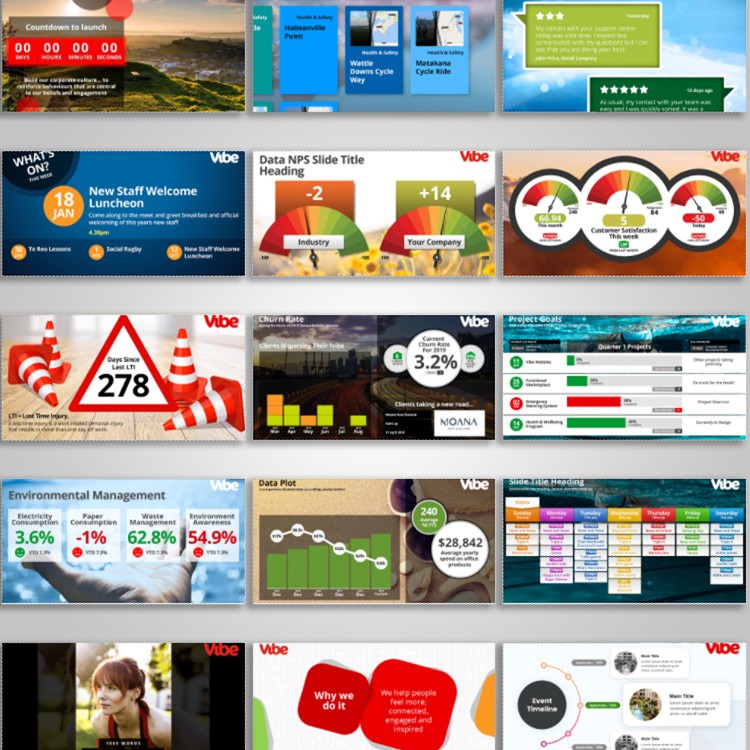As businesses continue to embrace the distributed workforce model, it’s crucial for internal communicators to find effective ways to keep everyone informed, engaged, and aligned. In this article, we will explore the unique challenges of communicating with a distributed workforce and provide four next steps for internal communicators to effectively engage with their workforce.
What is a Distributed Workforce?
A distributed workforce refers to companies that have a mix of office, remote and deskless employees. Workers are typically dispersed geographically.
The distributed workforce model has been around for more than 30 years but it’s really taken off in recent times, partially driven by the Covid-19 pandemic but also new distributed workforce tools such as Zoom, MS Teams and Workplace from Meta.
Modern distributed workforces require common software and connectivity tools for seamless collaboration, even for remote workers. It allows them to collaborate on projects, join online meetings and chats, share documents and data without friction. Some key tools and communication channels include:
-
Interactive video conferencing tools (e.g. Zoom, Microsoft Teams, WebEx, Skype)
- Employee collaboration apps (e.g. Slack, MS Teams, Skype, Workplace for Meta)
- Data and file storage and sharing (e.g. Google Drive, SharePoint, Dropbox)
- Top-down Communication channels (e.g. digital signage screens, corporate screensavers, newsletters)
How is it different to remote work and hybrid work?
Remote work describes all work taking place outside of traditional office. Staff can choose to work from their home office, a co-working space, a café and other convenient locations.
Hybrid work refers to employees working both in-office and off-site. The workforce would typically be within commuting distance to the
office, unlike a distributed workforce who might not be in the same geographic location.

Some workers in a distributed workforce model won't be bound to a desk
Unique Challenges of Communicating with a Distributed Workforce
\As more organisations adopt a distributed workforce model, communicating with employees has become increasingly challenging. With team members spread across different locations and time zones, it's crucial to find effective ways to keep everyone informed, engaged, and aligned. Here are some of the unique challenges of communicating with a distributed workforce.
1. Keeping employees engaged
With employees working remotely, it can be difficult to establish a sense of unity and camaraderie. Often, they may feel disconnected and isolated from their colleagues and the broader organisation. This can ultimately lead to lower productivity, morale, and job satisfaction.
As an internal communicator, it's essential to address these challenges and ensure that employees feel valued, included and engaged. Some ways to do that include shining the spotlight on star employees, recognising their achievements and sharing their success stories with the rest of the workforce. In addition, it’s essential to communicate the corporate goals and values effectively. This can be done on digital signage screens, screensavers, newsletters and more. Making these goals and values visible and relevant helps foster a sense of purpose and connection with the wider organisation.
2. Communicating with remote workers
With an abundance of information coming from various sources, internal communicators face the challenge of delivering accurate and consistent messages. Use reliable channels to effectively communicate with the workforce and avoid misinformation and rumours. This helps to maintain trust and transparency within the organisation, keeping everyone informed and aligned.
3. Sharing consistent messaging across the entire workforce
In many distributed workforces, non-wired staff members such as frontline workers or field employees don't have access to a device throughout their workday. As a result, they might miss important internal communications messages, announcements or updates that are communicated through email or intranet. In some cases, they'll only learn about these updates via word of mouth, which again risks your important company messages being distorted or misunderstood.
This leads to a knowledge gap between wired and non-wired staff, furthering the disconnect between non-wired staff and the rest of the organisation. To ensure that all staff members receive important company messages in a timely and accurate manner, it's crucial to find effective ways to communicate with non-wired staff members.
4. Maintaining the company culture
Maintaining a strong company culture can be a challenge when employees are distributed across different locations and working remotely. Without the regular face-to-face interactions that often help build a cohesive culture, it can be easy for remote workers to feel disconnected and disengaged from the larger company mission and values.
Internal communicators need to find new ways to connect remote workers with each other and with the company culture. Ideas include virtual team-building activities, sharing success stories and achievements, highlighting team members who exemplify the company values, and creating a shared sense of purpose and direction.
5. Defending against cyber security threats
Working outside the office opens up the organisation to cyber security challenges. With employees using personal devices and networks, confidential information can be compromised. Internal communicators need to make sure their organisation's cyber safety best practices are shared, understood and put into practice by the workforce.

Communicating with a distributed workforce requires some planning from internal comms teams
Next Steps for Internal Communicators
1. Evaluate your communication channels
Are your communication channels suitable for your distributed workforce? Effective internal communication often requires a mix of channels, from casual to critical top-down messages. This may include an intranet, collaboration software, email and digital signage screens, among others. When evaluating your channels, consider:
- How engaged are employees with the channel?
- Is the channel reaching the right audience?
- Does the channel keep messaging front of mind?
- Can you measure the impact?
- Is it the right channel for the message?
- Will the right teams have access to the channel?
2. Share big picture information
It’s all too easy for distributed staff to tunnel-vision on day-to-day tasks and projects they’re working on. This can lead to them to disconnecting from other teams and the wider company goals and vision.
As internal communicators, it's important to help them stay connected by sharing high-level information that ties back to the organisational objectives. This can include information about big wins, latest innovation, customer feedback, DEI (Diversity, Equity, and Inclusion) and ESG (Environmental, Social, and Governance) messages. By sharing this information, you're not only keeping your distributed workforce informed, but you're also helping them understand how their work fits into the larger goals and vision of the company. This, in turn, can help them feel more connected and engaged with the organisation.
3. Get senior leadership team aligned with internal messages
For a message to resonate it must be reiterated and reinforced by leaders and managers. Make sure important internal messages are delivered and reinforced by those leaders that employees trust and engage with. This is most important in a remote environment, where the distance between each level can be exacerbated.
4. Make information accessible to the right people at the right place at the right time
In a distributed workforce, it’s important to keep in mind that some employees, such as frontline workers, might not have access to laptops or mobile devices all the time. As an internal communication specialist, you need to make sure important corporate messages reach the right people at the right time, using the right channels. This means identifying the right channels and timing to communicate important corporate messages to make sure they're received and acted upon in a timely manner. It might require a mix of channels, such as email, workplace communication apps, digital signage screens, and more, to ensure that everyone receives the message in a way that suits their work.
In summary
As businesses shift towards the distributed workforce model, effective internal communication becomes more important than ever. The challenges of communicating with a distributed workforce can be daunting, but by taking the right steps, internal communicators can keep their workforce informed, engaged, and aligned.
By implementing the four steps we covered in the article, internal communicators can create a more connected and productive workforce that thrives in a distributed work environment.



